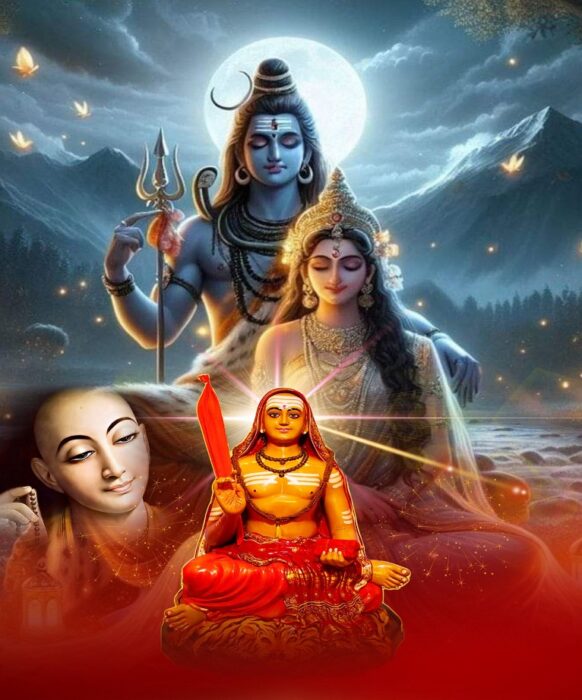Dwarakasharadamath, Dwarika, Purushottam, Badarikashram, Mathamnay, Rameshwar, Sringeri Shankaracharya had additionally comprised its constitution at the hour of setting up four seats. Mathanmayya, made by Shankaracharya, specifies a progression of controls of religious communities.
Ruler Adi Shankaracharya built up the four Shankar Maths in the four divisions of India to secure and mastermind the Sanatana Dharma, and his framework and so on was spoken to in his short however Guru Gambhir Grantha Mathamnaya-Mahanushasana. This book is as significant for Shankaracharya Peeths similar to its constitution for a country. The four Shankaracharya peeths are represented by the Mathamanaya-Mahanushasana. Mahamnaya Mahaushusana implies lecturing or depiction identified with religious communities.
As per Mathamnay, it is important to be a priest to turn into a Shankaracharya. To turn into a priest, it is important to repudiate the life of a householder, wear a wreath of Mundan, shraddha of predecessors, own pindadan, ocher robes, Vibhuti, Rudraksha. In the wake of experiencing this cycle, to become Shankaracharya, to be a Brahmin, to be a punisher, to be unadulterated of body mind, Jitendri for example one who has vanquished his detects. Must be versed in Vagmi for example sacred text rationale discourse. Must be a passing researcher of the four Vedas and the six Vedangas. After this the assent of the tops of the Akharas, Acharya Mahamandaleswaras, the gathering of prominent holy people. Shankaracharya will get the title after the seal of the Kashi Vidhat Parishad.
The genuine picture of Shankaracharya convention and Mathamanya Mahanushasana ought to be set before general society as a key element of Sanatana Dharma is that it continues inspecting itself continuously.or the security and request of Sanatan Dharma
Dwarakasharadapeeth, Govardhanpeeth, Jyotishpeeth and Sringeripeeth. The situation of these four peeths in the four corners of India and their work territory is portrayed in detail in this book. These are the four Acharya Peeths and separated from these there is no Shankar-Matha Acharya-Peetha. It is unmistakably referenced in numerous sections of Mathanmayya-Mahanushasana, as-
Maryadisha Suvigneya Chaturmathvidhyayini.
Tomatam Samupasritya Achayar: Sthapita: Kramat. (Shl. 38)
Parivradaryamaryado Mamakinam as the strategy.
Chatrapathidhāga power (Shl. 56)
The imperative capabilities are additionally set in these four Shankara Peeth blessed priests. The territory of Jyotirmath in Mathamnay is Badarikashram, Dwarka of Dwarkashardamath, Purushottam of Govardhanamath and Rameshwar of Sringeri. These are the four Acharya Peeths and the area and zone of these Peethas is certain. There is no notice of any Uppeeth nor Shakhapeeth in Mathamnaya, consequently their position isn’t in any capacity unnatural and accordingly isn’t Mathamnaya-concurred. The explanation that Adi Shankaracharya created the editorial in Kashi and lived here for quite a while, so he set up the Peeth in Kashi, is completely false. Since, any place Shankaracharyaji went, Acharya would have set up seats if there were numerous Shankar-mathas. In such a circumstance, he would initially set up a Shankaracharya on the banks of the Narmada (his Guru Govindapada with whom he had taken commencement) in Govind Forest, however that was not his point.
Any place they went, they didn’t set up seats. He has depicted these peats introduced in the four corners of India (in Mathnamay) as obvious, that is, which is the subject of vision, that is, whose position is noticeable on the ground floor. Dwarakasharadapeeth in the west, Govardhanpeeth in the east, Jyotishpeeth in the north and Sringeripeeth in the south with their individual tirthas, sampradayas (bhogwar, bhurivar, ketavar, nandavar) Mahavakya and Vedas. A few people accept that the course ought to be controlled by the ocean, at that point the Sringeri cloister of the south will be north of the ocean which will be flawed. The bearing is resolved from the Vindhya mountain, which is arranged at the core of the India region.
Aside from these four significant obvious Shankar-Maths, three illuminating religious communities are additionally referenced in the book, however their subject is characterized in the Vigyanac vigraha (Verse 39). He has depicted these three Seshamanis as educated, that is, they don’t have a physical situation on the ground floor, yet these three are passionate.
These three Sheshamanis are named – the upstanding, the spirit and the enduring. The territory of the upper Amnay is to be visited in Kailas, Tirtha Manas and Brantatva, while the four journey tirthas having state of being are Mahouddhi, Tungabhadra, Gomti and Alaknanda separately. Likewise, the second illuminated one is referenced by the name Amnaya Swatma, whose region is Nabh-Sarovar and Triputi. The third illuminated Amnaya is godlike whose field is perception and the journey is the becoming aware of good sacred texts. Thusly, the three illuminated are for the Amanya soul and the physical situation of the four noticeable backs is on the ground floor. For no situation is the exchange of these backs conceivable. Despite the fact that the acharyas of these seats make short or long remain in places like Kashi, Delhi, Kolkata and so forth., the Shankar-Peeth can’t be moved alongside them. All the journeys of the nation are emblematically likewise in Kashi, however those journeys have their unique spots where they are in genuine position.
During his lifetime, Adishankaracharya revamped numerous religious communities, sanctuaries destroyed by blasphemers, however thus additionally he was not pronounced Shankar Math. Anyway, since Kashi has been a strict capital since old occasions, there is no requirement for a different Shankarpeeth. Where the subject of setting up Shankaracharya Peeth emerges where the more youthful Shiva dwells?

